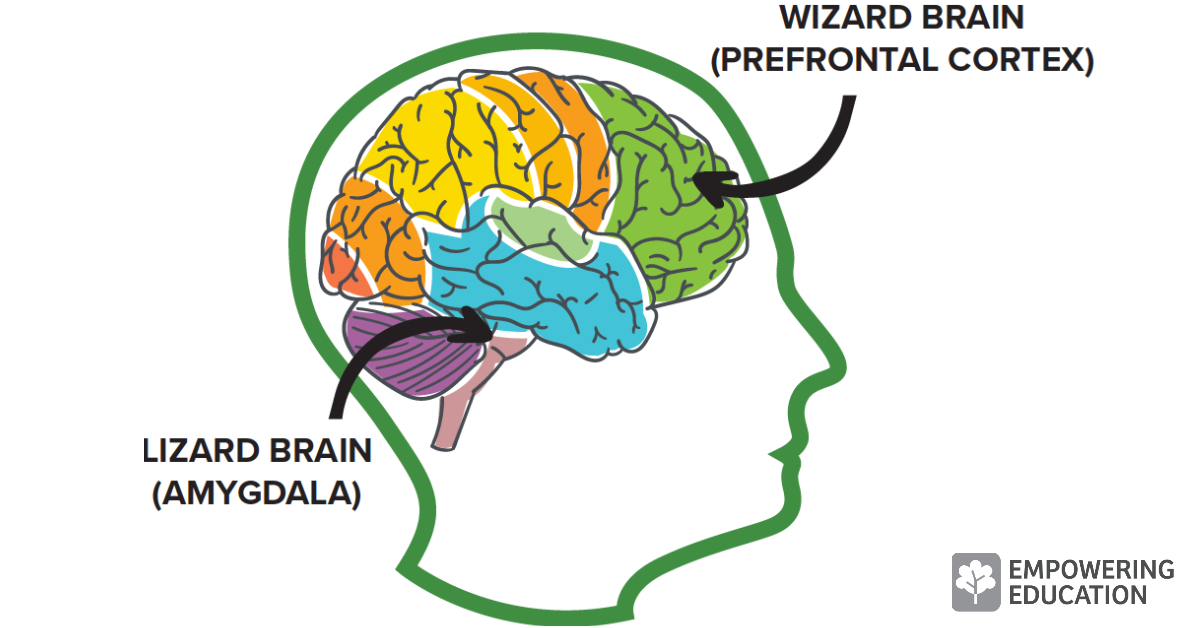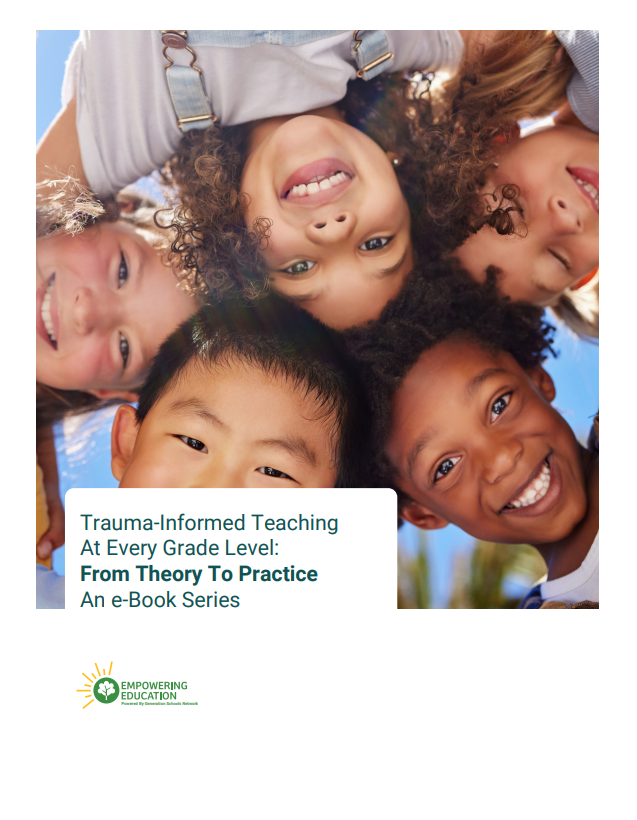Trauma-Informed Teaching: Defining Trauma
- An event, or series of events, that overwhelms the central nervous system.
- When one’s ability to defend, protect, or say no is overwhelmed.
- What occurs when an individual's solution (active response to threat) does not work.

The Autonomic Nervous System
The threat-response system is controlled by a branch of the nervous system known as the autonomic nervous system (ANS). The ANS handles all our basic automatic functions like digestion, heart rate, breathing, and our body’s response to stress. The ANS can be further divided into the sympathetic nervous system (SNS) and the parasympathetic nervous system (PNS). The SNS is known as the “fight-or-flight” response and the PNS is referred to as our “rest and digest” system.
The Fight-Flight-Or-Freeze Response
Past, Present, & Future: The Role of the Pre-Frontal Cortex
Get The Full Lesson
Empowering Education offers full lesson plans for teachers on teaching kids how to pay attention to what is happen in their body when they feel difficult emotions.
Trauma In the Classroom
- explosive rage
- hyperactivity & attention deficits
- impulsive behavior
- intense anxiety & fear
- extreme sensitivity & sadness
- withdrawal
- lethargy & chronic fatigue (falling asleep at inappropriate moments)
- slowed motor movements
- frequent and often inexplicable physical symptoms (stomach aches, headaches, etc.)
Get The Full Lesson
Empowering Education offers full lesson plans for teachers on teaching kids how to pay attention to what is happen in their body when they feel difficult emotions.
Nuances of Trauma
In summary, our expanded definition of trauma now includes a number of important nuances:
- Trauma occurs when one’s solution (active response to threat) does not work (The nervous system has been overwhelmed).
- Trauma can result from real or perceived threats (Nervous system activation is the same for real and imagined threats).
- Trauma is subjective and relative (what I perceive as overwhelming, or my capacity for a solution, may be different than what you perceive as overwhelming).
- Trauma creates a disconnect between the mind and the body. (Healing occurs when you can feel safe in your body, in the present moment - a resting nervous system state).
The next post in this series will explore the role of Adverse Childhood Experiences (ACE's) as they relate to long-term health outcomes and immediate impacts in the classroom.






